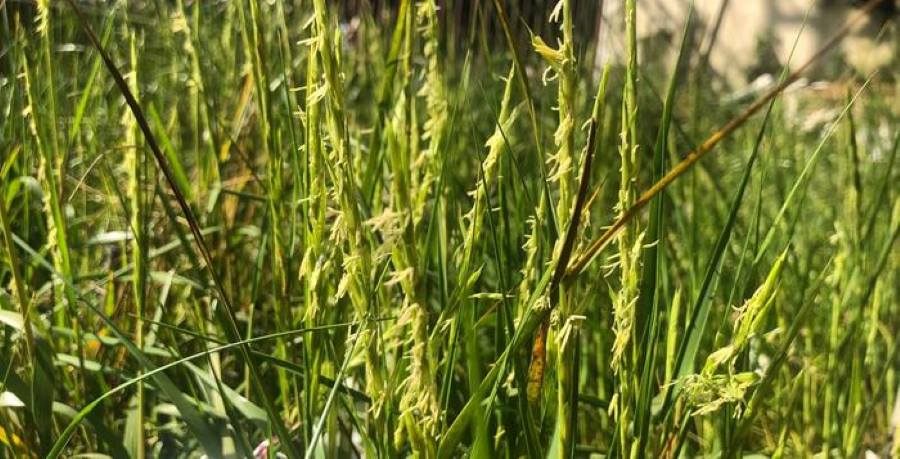Summary:
A sweeping new study published in Nature Genetics sheds light on the genetic makeup of rice and its wild relatives, offering a roadmap for breeding more resilient crops amid growing climate pressures.
Led by researchers from King Abdullah University of Science and Technology (KAUST) and Wageningen University & Research, the work presents 11 high-quality genome assemblies from wild Oryza species — nine tetraploid and two diploid — capturing nearly 15 million years of evolution. The genus Oryza, which includes cultivated rice and its undomesticated relatives, harbors an extraordinary range of genetic diversity. This diversity holds untapped potential to develop rice varieties that can thrive in extreme environments, including regions affected by drought, salinity, and rising temperatures.
The researchers discovered that rice genomes vary dramatically in size — ranging more than threefold — due to the activity of transposable elements, or “jumping genes,” which drive genetic innovation. In the salt-tolerant species Oryza coarctata, the team also observed a unique expression pattern among its duplicated genes, hinting at mechanisms of adaptation. Their comprehensive analysis of both diploid and tetraploid species reconstructs the evolutionary history of rice and outlines genetic tools for crop improvement and neodomestication.
With over half the world’s population depending on rice, this genomic blueprint comes at a critical moment for global food security.

Genetic secrets of rice pave way for future farming and conservation
A new study led by researchers at King Abdullah University of Science and Technology (KAUST; Saudi Arabia) and Wageningen University & Research (the Netherlands), provides new insights on rice evolution, showing how the DNA of this valuable crop has changed across species. The findings are expected to not only help with improving rice yields but also with the introduction of rice into regions where rice production is currently untenable.
Rice is one of the first domesticated crops (approximately 10,000 years ago). The artificial selection farmers have made for nutrition and other traits that maximize profit have reduced its genetic diversity and thus its resilience to environmental stresses.
On the other hand, the wild relatives of rice (i.e. Oryza) have experienced some 15 million years of evolution, which has given these relatives a remarkable array of genetic variation across their genomes (all the DNA in an organism) and thus an ability to adapt to all sorts of environmental conditions, like heat, drought, and salinity.
“The genus Oryza has an incredibly rich collection of genomes. We were able to explain the consequences of the evolution on the collective genomes of rice and its wild relatives,” explained KAUST Prof. Rod Wing, who led the study along with his postdoctoral research associate, Alice Fornasiero.
Humans are diploid, meaning they inherit two sets of chromosomes — one from each parent. Anything more or less can be fatal. Plants can be polyploidy, meaning then can receive multiple sets of chromosomes from their parents. These extra sets result in a larger genome that can facilitate adaptation to new or stressful environments and the evolution of novel traits and even new species.
The study examined nine tetraploid and two diploid wild relatives of rice. The researchers found that the species could be distinguished by subsets of the genomes. These differences were mostly due to transposable elements, also known as jumping genes because they are DNA sequences that move from one location in the genome to another and a common natural means for creating genetic diversity.
Additionally, the existence of diploid and tetraploid species resulted in genomes that varied more than twice in size. In some of this massive DNA were genes that have strengthened the robustness of the plant against hotter temperatures, drier and saltier soil, and other environmental stresses common to the Middle East and increasing worldwide with climate change.
The study was also able to determine the evolutionary tree of wild rice, showing when new species emerged. This history offers clues for when rice underwent significant stress that stimulated genomic changes for the plant to endure.
“The genome analysis of this work provides a comprehensive understanding of how rice and its complex wild relatives have evolved. This work offers a comprehensive framework for future efforts for developing robust rice crops that can potentially withstand harsh environments,” said Wageningen University Professor Eric Schranz, who also contributed to the study.
With more than 3.5 billion people relying on it as the main staple of their diet, rice is one of the most important food crops in the world.
Journal Reference:
Fornasiero, A., Feng, T., Al-Bader, N. et al., ‘Oryza genome evolution through a tetraploid lens’, Nature Genetics (2025). DOI: 10.1038/s41588-025-02183-5
Article Source:
Press Release/Material by King Abdullah University of Science & Technology (KAUST)
Featured image credit: rawpixel.com | Freepik




